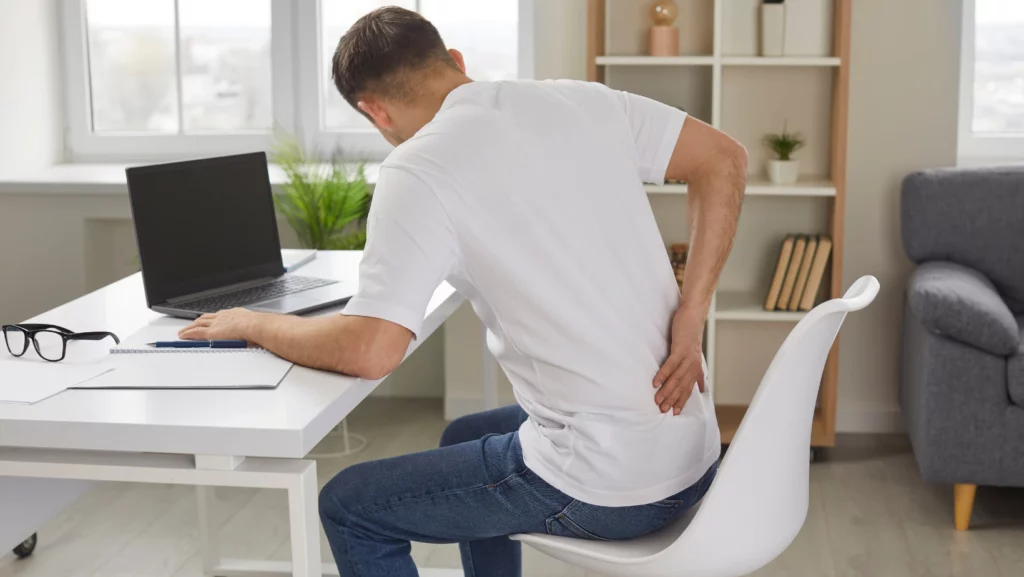How to Sit with a Fractured Vertebra
Introduction
Sitting comfortably and safely with a fractured vertebra can be a challenging experience. Vertebral fractures, often caused by trauma or conditions like osteoporosis, can lead to significant pain and discomfort. Understanding how to sit properly is crucial for managing pain, promoting healing, and maintaining mobility during recovery. This comprehensive guide will explore effective techniques for sitting with a fractured vertebra, provide tips for comfort and safety, and address common questions related to this condition.
Understanding Vertebral Fractures
A vertebral fracture occurs when one of the bones in the spine (vertebrae) breaks or collapses. These fractures can result from various causes, including:
- Trauma: Falls, car accidents, or sports injuries can lead to fractures.
- Osteoporosis: A condition that weakens bones, making them more susceptible to fractures.
- Cancer: Tumors can weaken vertebrae, leading to fractures.
- Infection: Infections in the spine can compromise bone integrity.
Types of Vertebral Fractures
Vertebral fractures can be classified into different types, each with its implications for treatment and recovery:
- Compression Fractures: These occur when the vertebra collapses due to pressure, often seen in individuals with osteoporosis.
- Burst Fractures: Result from a severe force that causes the vertebra to shatter, potentially affecting surrounding tissues.
- Wedge Fractures: A type of compression fracture where the front part of the vertebra collapses, creating a wedge shape.
Sitting Techniques for Comfort and Safety
Sitting properly is essential for managing pain and preventing further injury. Here are some effective techniques to consider when sitting with a fractured vertebra:
1. Choose the Right Chair
- Sturdy and Supportive: Select a chair that provides good back support and stability. Avoid chairs that are too soft or low.
- Height Matters: Ensure the chair is at an appropriate height so that your feet can rest flat on the floor. This helps maintain proper posture.
2. Use Cushions for Comfort
- Lumbar Support: Place a small cushion or rolled towel behind your lower back to provide additional support and maintain the natural curve of your spine.
- Seat Cushion: Consider using a seat cushion to relieve pressure on your tailbone and improve comfort.
3. Maintain Proper Posture
- Sit Up Straight: Keep your back straight and shoulders relaxed. Avoid slouching or leaning forward, as this can exacerbate pain.
- Feet Flat: Keep your feet flat on the floor or on a footrest to maintain proper alignment and reduce strain on your lower back.
4. Avoid Twisting Motions
- Pivot with Your Feet: When turning to reach for something, pivot your feet instead of twisting your torso. This helps prevent unnecessary strain on your spine.
- Use Armrests: If available, use armrests to help push yourself up and down from the chair, reducing strain on your back.
5. Take Breaks and Change Positions
- Frequent Breaks: Avoid sitting for prolonged periods. Stand up, stretch, or walk around every 30-60 minutes to relieve pressure on your spine.
- Change Positions: Adjust your sitting position periodically to avoid stiffness and discomfort.
Pain Management Strategies
Managing pain effectively is crucial for recovery. Here are some strategies to consider:
1. Medication
- Over-the-Counter Pain Relievers: Nonsteroidal anti-inflammatory drugs (NSAIDs) like ibuprofen or acetaminophen can help manage pain and inflammation.
- Prescription Medications: Consult your healthcare provider for stronger pain relief options if needed.
2. Heat and Cold Therapy
- Cold Packs: Apply cold packs to the affected area for the first 48 hours to reduce swelling and numb pain.
- Heat Therapy: After the initial swelling has subsided, use heat packs to relax muscles and improve blood flow.
3. Physical Therapy
- Consult a Physical Therapist: A physical therapist can provide tailored exercises and stretches to improve mobility and strengthen supporting muscles.
- Gentle Exercises: Engage in low-impact activities as recommended by your healthcare provider to promote healing without exacerbating pain.
Tips for Daily Activities
In addition to sitting, daily activities can be challenging with a fractured vertebra. Here are some tips for managing common tasks:
1. Getting In and Out of Bed
- Use Your Arms: When getting out of bed, roll onto your side, push up with your arms, and swing your legs over the edge.
- Use Pillows: Place pillows under your knees while lying down to reduce strain on your back.
2. Lifting Objects
- Avoid Heavy Lifting: Refrain from lifting heavy objects until cleared by your healthcare provider.
- Use Proper Technique: If lifting is necessary, bend at the knees and keep the object close to your body to minimize strain on your back.
3. Driving
- Consult Your Doctor: Before resuming driving, consult your healthcare provider to ensure you are safe to do so.
- Adjust Your Seat: Ensure your seat is positioned for comfort and visibility without straining your back.
FAQ Section
Q: Can I sit normally with a fractured vertebra?
A: It is essential to sit properly with support and maintain good posture. Avoid slouching and choose a supportive chair.
Q: How long will I need to modify my sitting position?
A: The duration of modifications varies based on the severity of the fracture and your recovery progress. Consult your healthcare provider for personalized guidance.
Q: Are there specific exercises I can do while sitting?
A: Gentle seated exercises, such as ankle pumps and shoulder rolls, can help maintain circulation and reduce stiffness. Consult a physical therapist for tailored exercises.
Q: What should I do if I experience increased pain while sitting?
A: If you experience increased pain, adjust your position, take breaks, and consult your healthcare provider if the pain persists.
Q: Can I use a heating pad while sitting?
A: Yes, a heating pad can help relieve muscle tension and pain. Ensure it is at a comfortable temperature and avoid prolonged use.
Q: Is it safe to drive with a fractured vertebra?
A: Consult your healthcare provider before resuming driving. They will assess your condition and provide guidance based on your recovery.
Conclusion
Sitting with a fractured vertebra requires careful attention to posture, comfort, and pain management. By choosing the right chair, maintaining proper alignment, and taking breaks, you can minimize discomfort and promote healing. Always consult your healthcare provider for personalized advice and follow their recommendations for recovery.For more information on spinal health and fractures, you can refer to the Cleveland Clinic page on spinal fractures.
| Technique | Description |
|---|---|
| Choose the Right Chair | Select a sturdy, supportive chair at the appropriate height. |
| Use Cushions | Utilize lumbar support and seat cushions for comfort. |
| Maintain Proper Posture | Sit up straight with feet flat on the floor. |
| Avoid Twisting Motions | Pivot your feet instead of twisting your torso. |
| Take Breaks | Stand, stretch, and change positions every 30-60 minutes. |
| Medication | Use over-the-counter pain relievers as needed. |
| Heat and Cold Therapy | Apply cold packs initially, then heat packs to relax muscles. |
| Physical Therapy | Engage in gentle exercises under the guidance of a physical therapist. |
By following these guidelines and seeking appropriate medical advice, you can navigate the challenges of sitting with a fractured vertebra and work towards a successful recovery.



